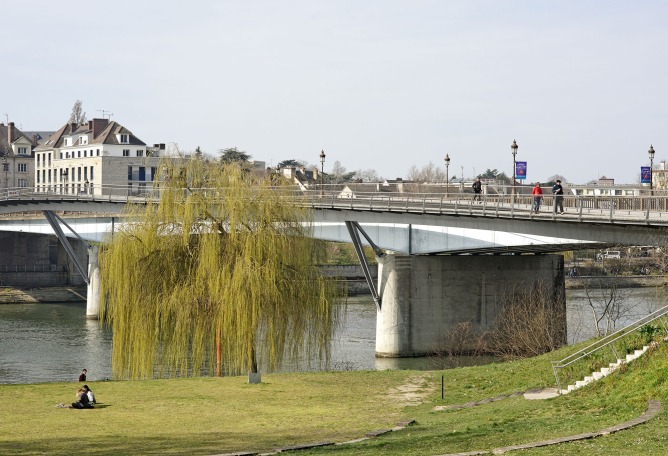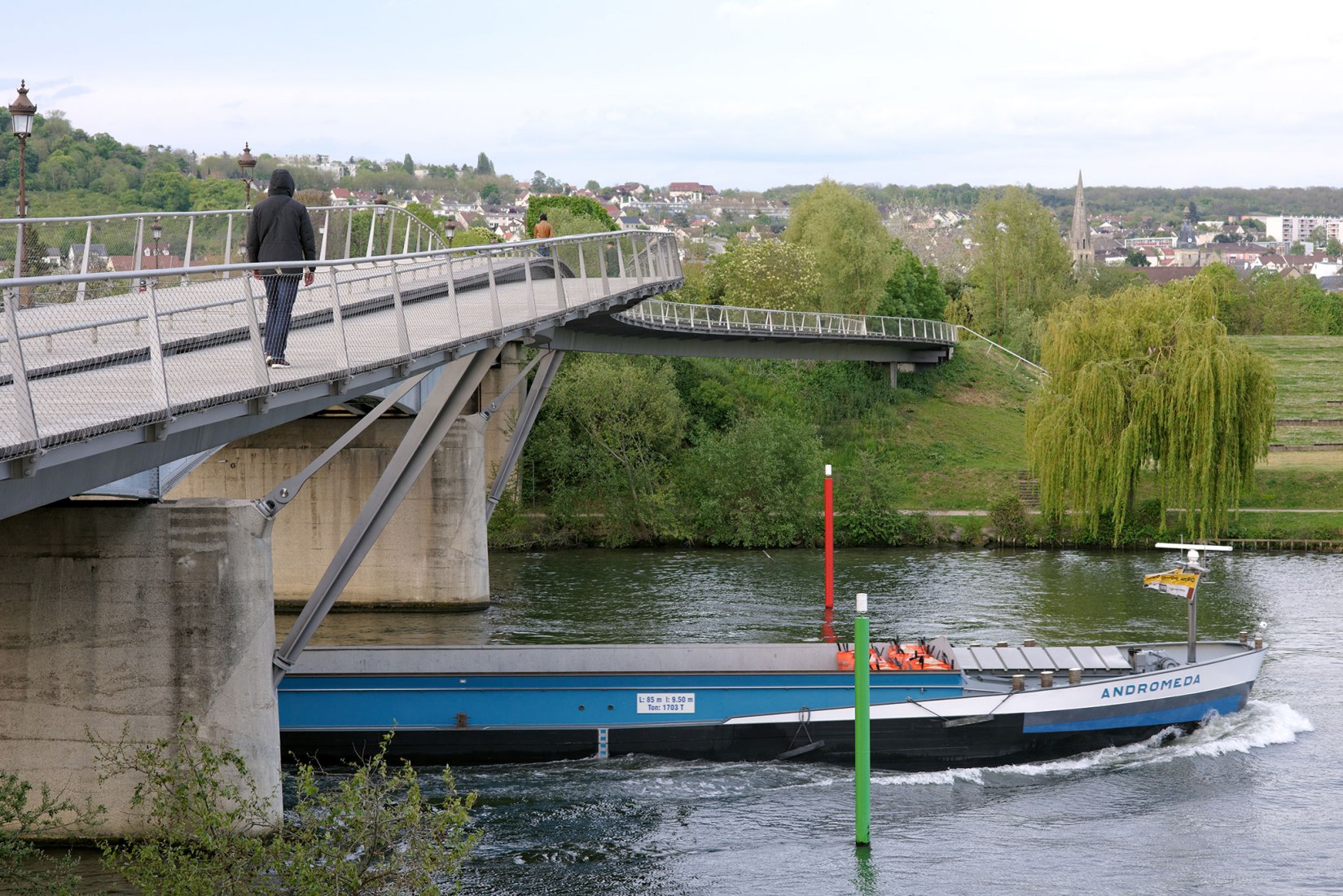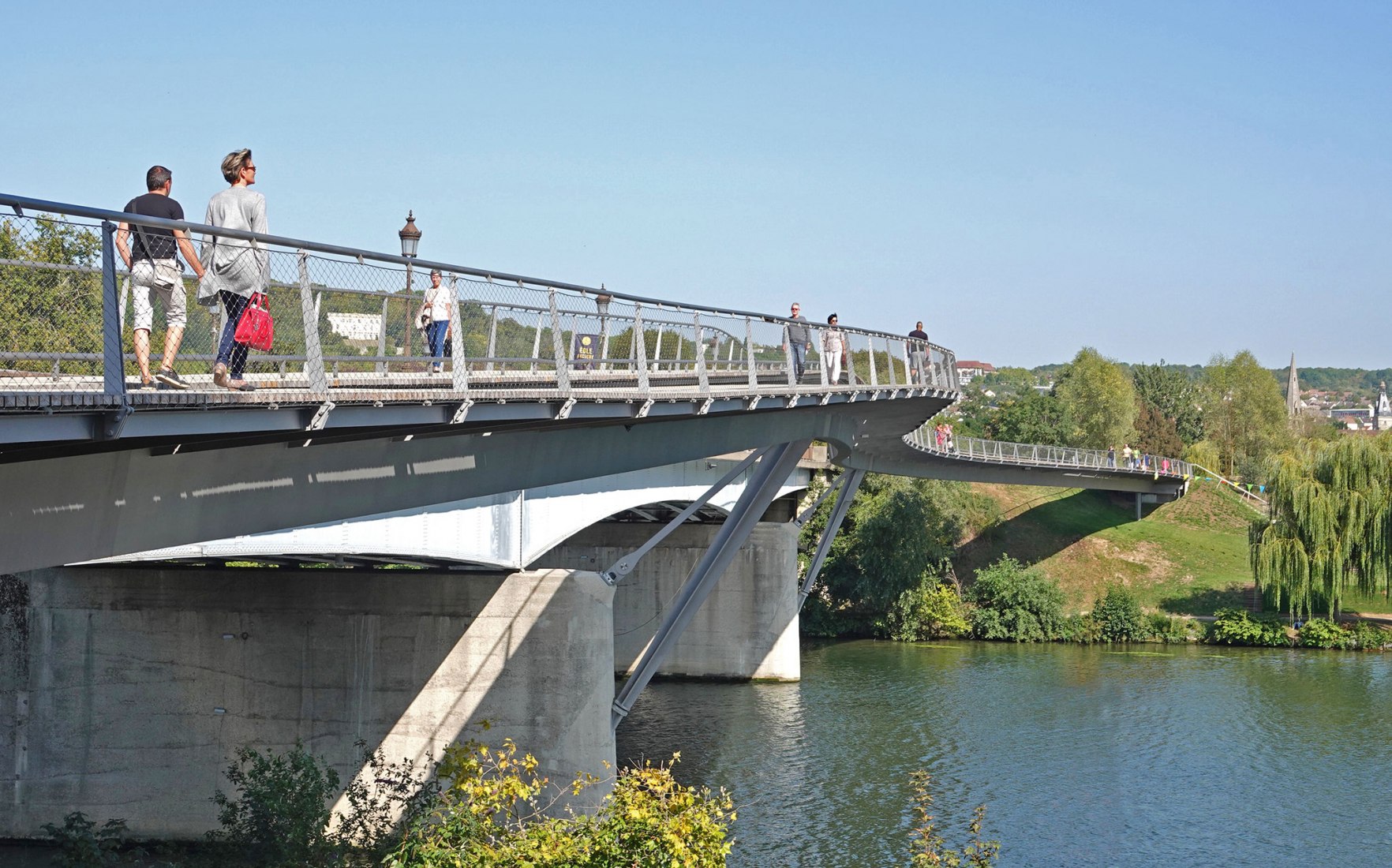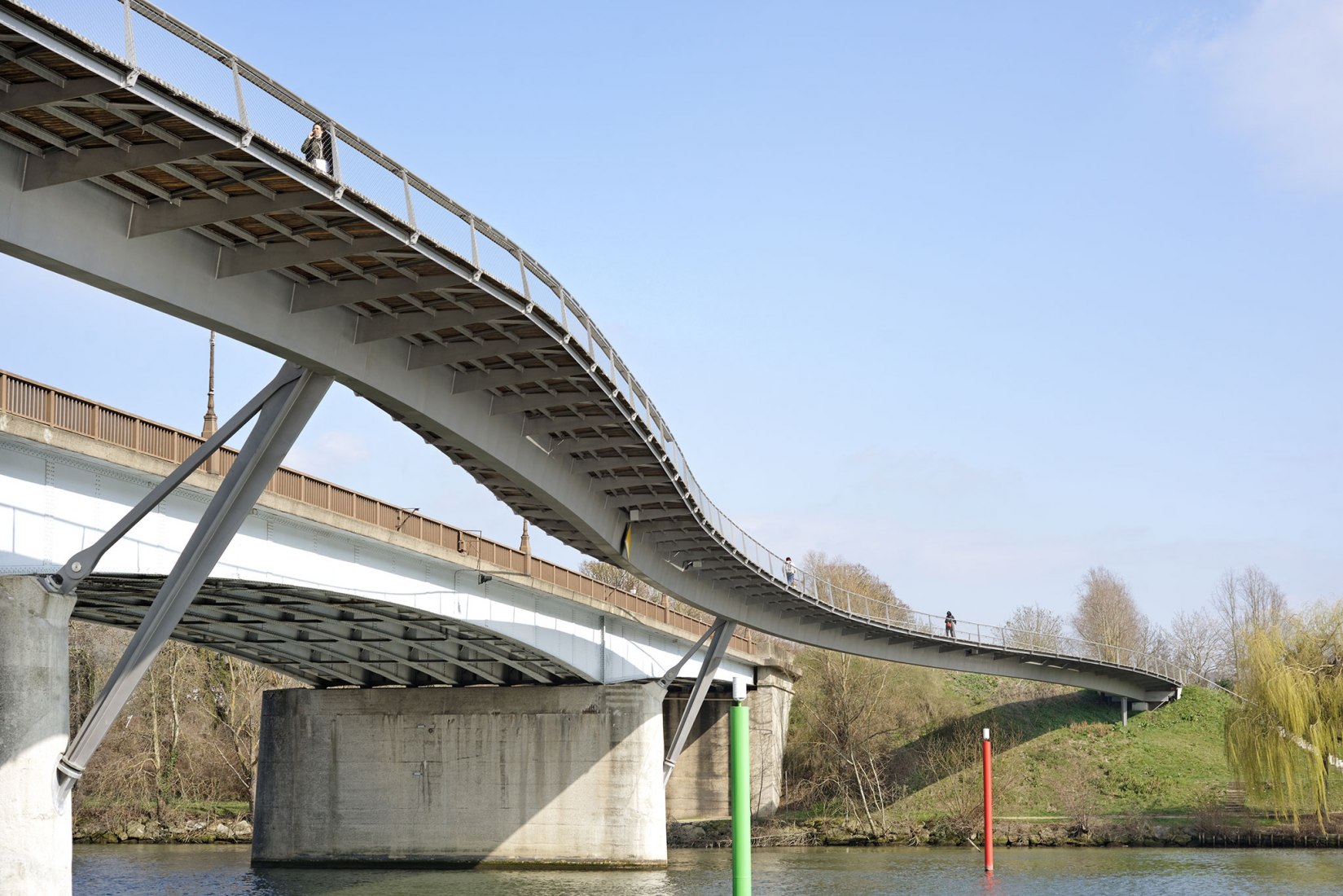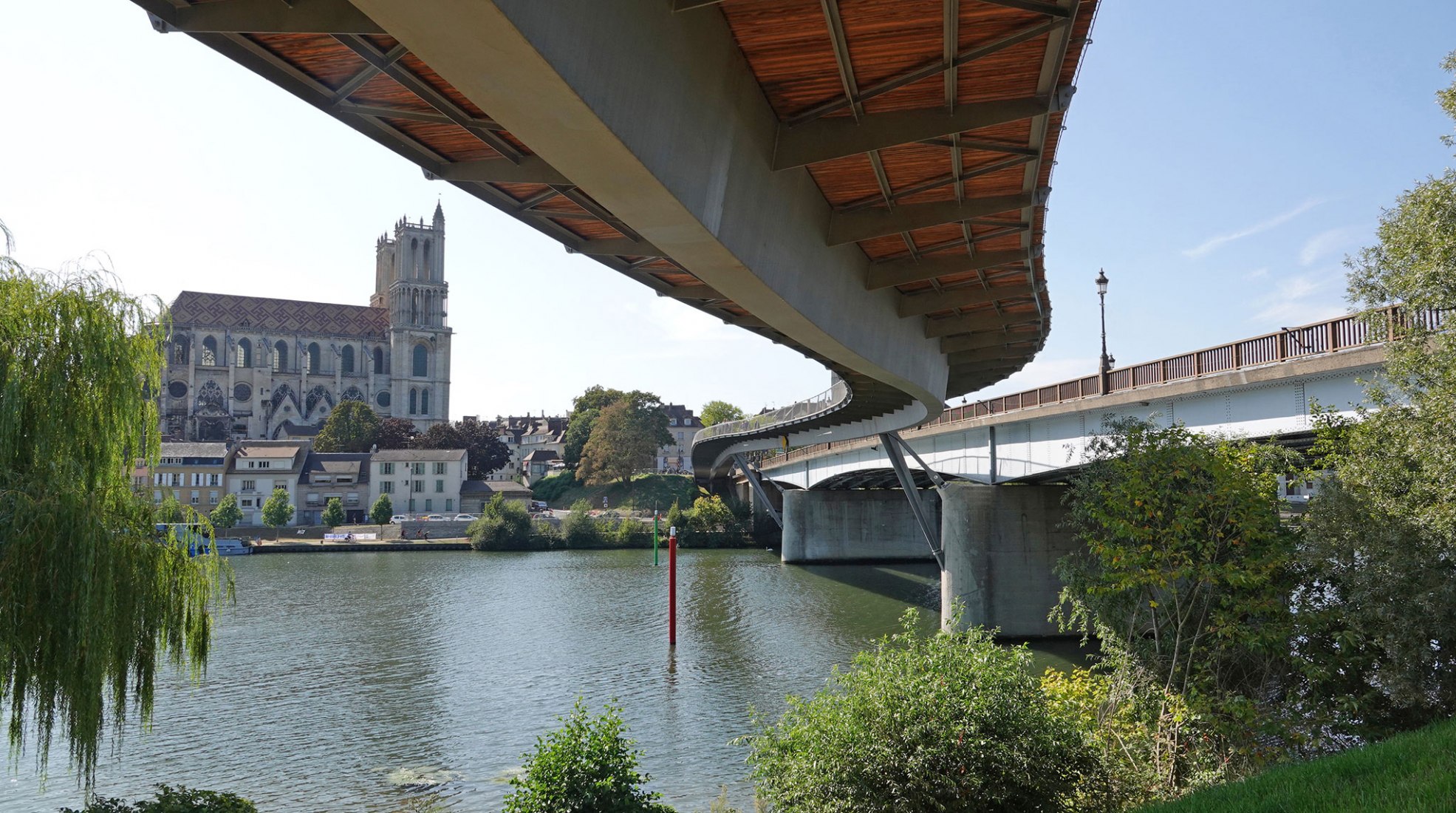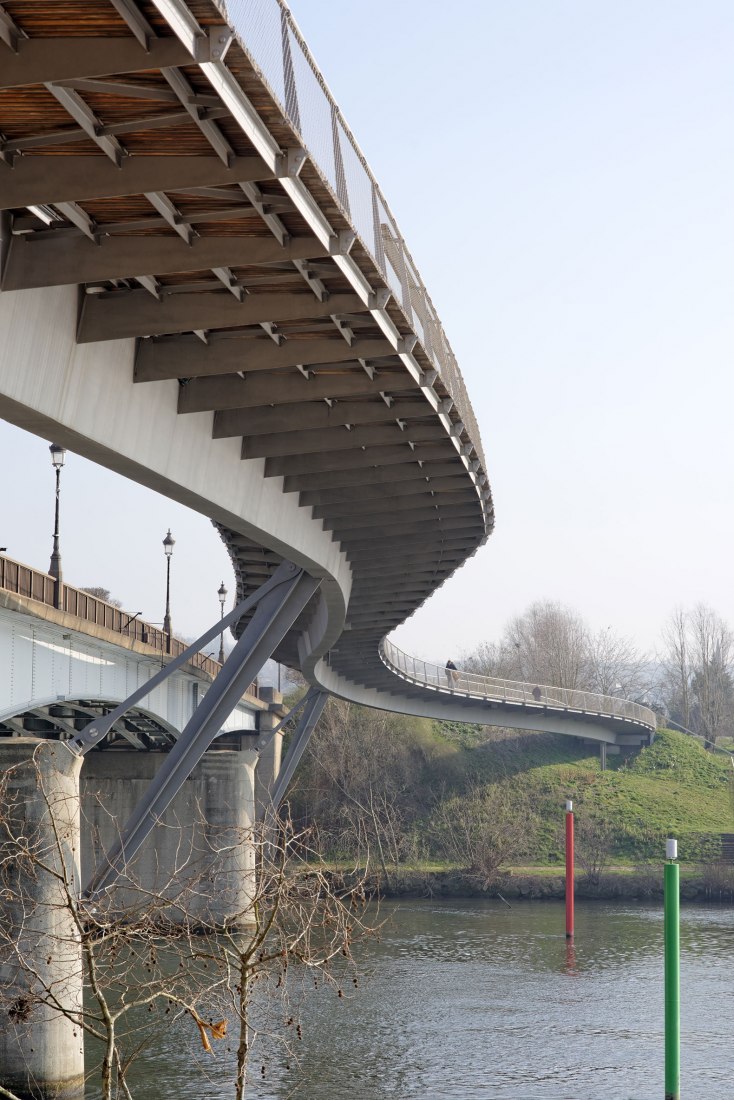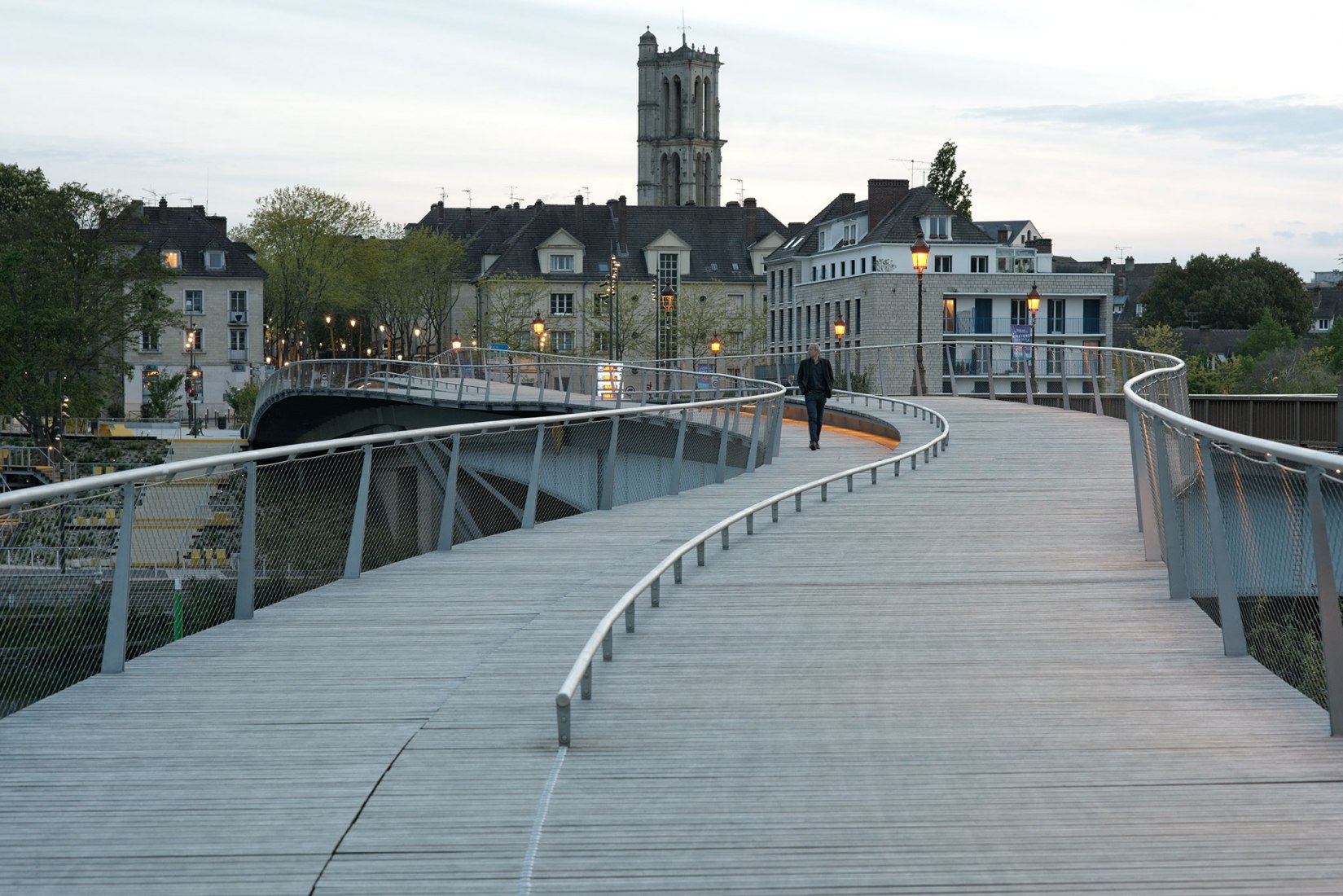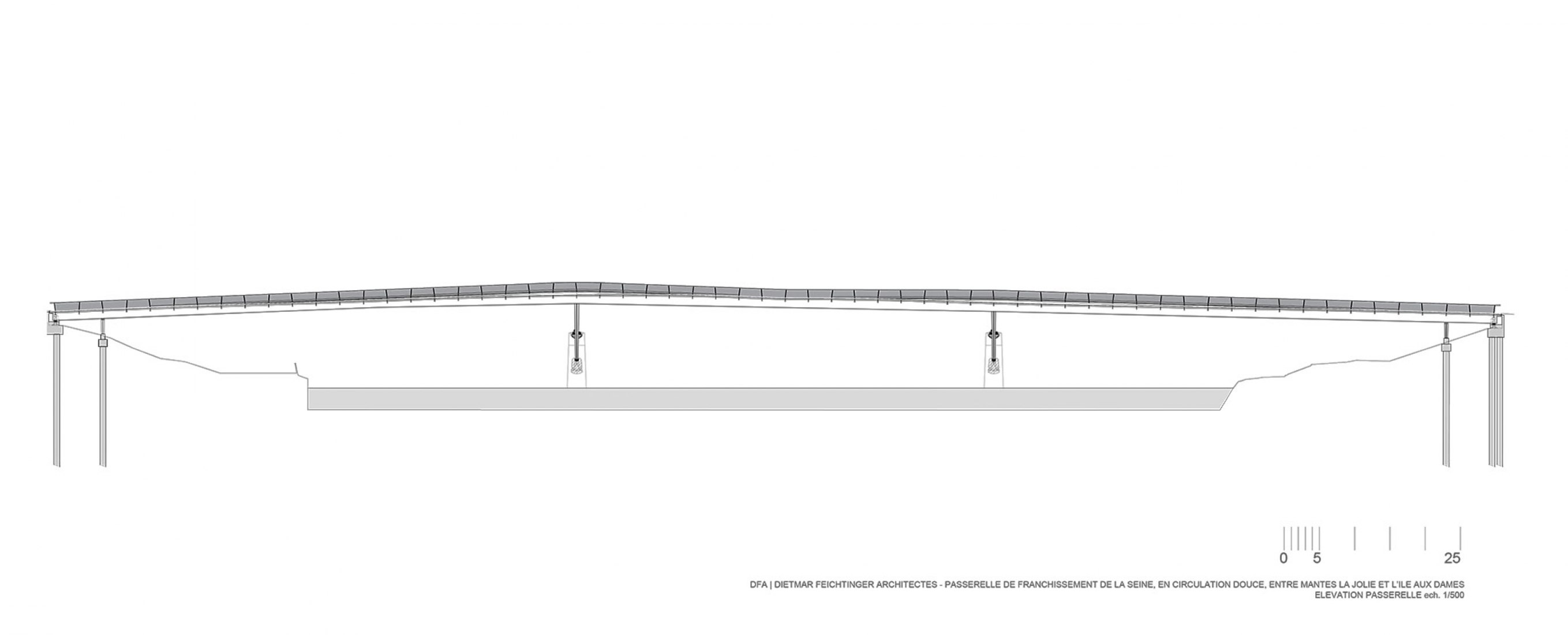The project is built leaning on the large concrete pillars of the existing bridge, but moving away from it to avoid the inconvenience of road traffic. In this way, the footbridge flies over the river, avoiding the creation of new supports in its channel. In addition, a central box girder absorbs the torsion created by this peculiar structure.
Description of project by Dietmar Feichtinger Architectes
Dietmar Feichtinger’s new soft mobility bridge over the Seine linking Mantes-la-Jolie and Limay is an invitation to embark on a veritable urban promenade. In the crook of one of the loops of the river that define the southern limit of the French Vexin, he has created a subtle staging for urban space and the natural landscape to meet. In the wooded shade of the hills that dominate the valley, between the high silhouette of the collegiate church of Notre-Dame and the streets of the ancient city on the north bank, the new pathway crosses two arms of the river, pausing only to rest on the wooded slope of the Ile aux Dames.
A double footbridge for a soft link
Almost imperceptible when one approaches the town from the riverbanks, the first crossing is based on an existing structure, the Pont Neuf, built in the 18th century following the destruction of the ramparts protecting Mantes. The relatively narrow structure was rebuilt after the Second World War and spans the Quai des Cordeliers at the continuation of the Rue Royale and opens up the town to the north. As it is now saturated with permanent road traffic, it is no longer appropriate for pedestrians and cyclists to cross the river. The project for a link dedicated to sustainable mobility between Mantes and Limay, supported by the two municipalities and the region, was the subject of a competition in 2012. The first phase of the work was completed in 2019 with the opening of the footbridge spanning the arm of the river, adjacent to the former royal city, and the new link is part of an urban route linking the historic districts of the two towns. From the foot of the Gothic collegiate church, the footbridge crosses the first arm of the river, runs along the island, skirting a small open-air theatre (“Théâtre de Verdure”). You then reach Limay by taking the Old Stone Bridge and picking up the Rue de Paris, which leads to the town centre.
For this first crossing, which is now completed and runs alongside the road bridge, Dietmar Feichtinger chose to place the new structure at a distance from the existing bridge deck. When you stand on the bank, the footbridge looks as if it is flying over the river: fine steel curves undulate between the two banks in a three-dimensional motion, continually changing shape, rising and almost imperceptibly separating the pedestrian path from that of the two-wheelers, which is positioned closer to the car bridge. Whether crossing on foot or by bike, one almost immediately forgets the noise of the traffic. A difference in level is established between the decking of the two routes to form a bench seat. In the middle of the crossing, where the footbridge rises well above the roadway, the levels meet and the passage widens to offer passers-by a view over the river where they can linger to admire the beautiful landscape.
A ribbon of steel and wood linking the two river banks
Dietmar Feichtinger enjoys diverting, softening and twisting his structures, as he did in Paris with the Simone de Beauvoir footbridge; he never passes up an opportunity to twist the wise rules of traditional construction. Beneath the buttresses of the collegiate church, he casts a double ribbon of steel and wood which brushes against, rises above, gets closer to and then moves away again from the road. The all-steel structure is supported by the bridge abutments on either side of the river. A central caisson with a variable trapezoidal profile forms the main framework, like a spinal column to which a series of T-shaped brackets are fixed 3 meters apart from one another. The watertight box girder is composed of welded metal sheets whose torsional strength enables the asymmetrical forces generated by the profile of the bridge to be transferred to the supports. In the middle of the river, the two concrete pillars of the Pont Neuf serve to carry the intermediate supports. Thus, the new structure does not encroach on the riverbed. In each case, an inclined cross-sectional leg, fixed to the stem of the pier, takes up the vertical force, while a connecting rod ensures the stability of the entire structure. These connecting rods, embedded in the caisson, are articulated at the head of the pillars. The variable profile of the brackets makes it possible to support decks of varying widths and to absorb the differences in elevation of the decking between the two-wheeler path on the bridge side and the pedestrian path on the river side.
A footbridge like a seam, to bring an historic route back to life
On the island, the deck flares out and lowers gently, the urban walkway continues round the open-air theatre like a balcony and brings the collegiate church into view. The route will be fully functional once the restoration work on the Vieux Pont, which will again link the Ile aux Dames to Limay to the north-east, has been completed. The northern part of the walk follows the blonde stone arches that link two wooded banks painted by Corot in 1869. The historic bridge, two of whose central spans were blown up by the French army during the 1940 debacle, leaving a gaping scar, will be fitted with a discreet suture: a fine steel framework made up of 3 beams with a slender elliptical profile, supporting a steel, glass and wood deck. A plain guardrail of flat iron reinforces the lightness and linearity of the footbridge, and contrasts with the massiveness and curves of the stone structure. The route ends on the last arches of the Old Bridge and sets down on the opposite bank; you then walk past the Maison du Passeur, a former customs house with a tree-lined triangular esplanade which is nowadays redundant. Soon this public square will come alive once again when the pedestrians and cyclists arrive at the entrance to the old town of Limay.


